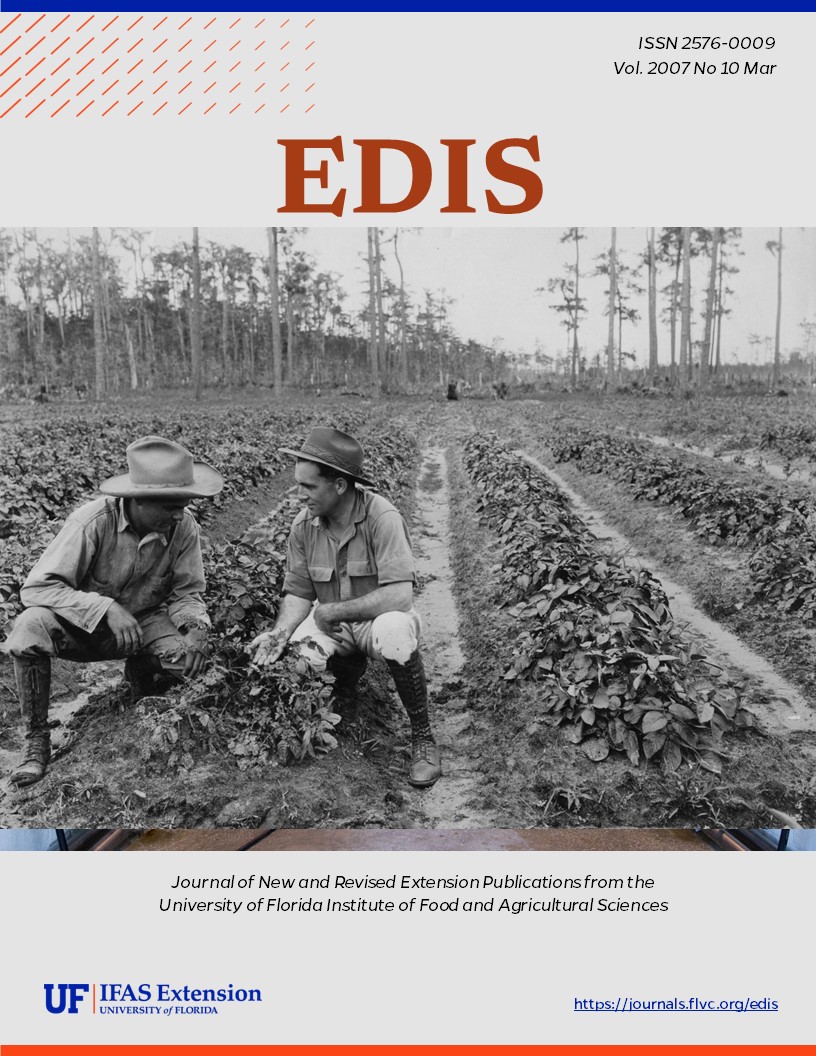Abstract
HS-1079, a 3-page fact sheet by J.H. Freeman and S.M. Olson, describes the use of this strategy for increasing seedless watermelon yield, and the results of research comparing the effective of seven in-row pollenizer cultivars. Includes tables with characteristics of commercially available pollenizer cultivars, and plant population and plant cost analysis. Includes references. Published by the UF Department of Horticultural Sciences, January 2007.
References
Fiachino, D.C. and S.A. Walters. 2003. Influence of diploid pollenizer frequencies on triploid watermelon quality and yields. HortTechnology 13: 58-61. https://doi.org/10.21273/HORTTECH.13.1.0058
Maynard, D.N. and G.W. Elmstrom. 1992. Triploid watermelon production practices and varieties. Acta Hort. 318: 169-173. https://doi.org/10.17660/ActaHortic.1992.318.21
NeSmith, S. and J. Duval. 2001. Fruit set of triploid watermelon as a function of distance from a diploid pollenizer. HortScience 36(1): 60-61. https://doi.org/10.21273/HORTSCI.36.1.60
Olson, S.M., E. H. Simonne, D. N. Maynard, G. J. Hochmuth, C. S. Vavrina, W. M. Stall, T. A. Kucharek, S. E. Webb, T. G. Taylor, and S. A. Smith. 2004. Cucurbit production in Florida, p. 169-198. In: S. M. Olson and E. H. Simonne (eds.) Vegetable Production Handbook for Florida. Univ. Fla. Coop. Ext. Serv. and Vance Publishing. Lenexa, KS.
U.S. Department of Agriculture. 2005, 2006. National watermelon report. U.S. Dept. Agr. Agricultural Marketing Service. (http://www.ams.usda.gov) Thomasville, Ga.

